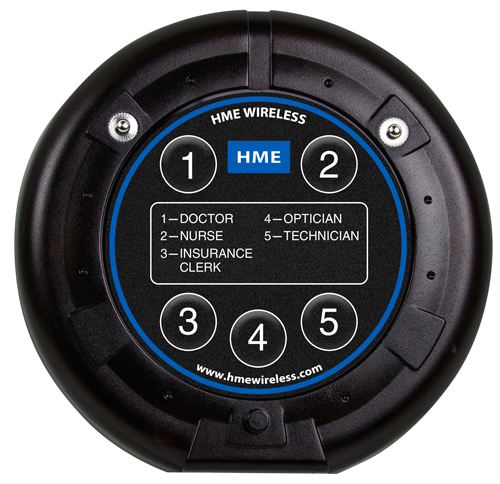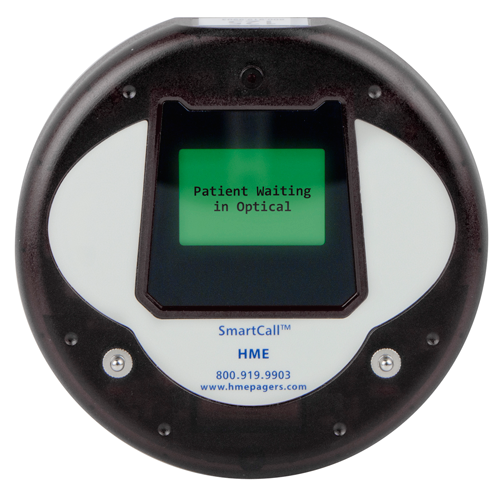
The push button paging system keeps exams moving with the ability to page for an optician,
technician, or anyone who needs to be notified, to come to a specific exam room.
RICHMOND, Va.—To increase revenue from existing patients, ophthalmology practices have been gradually yet steadily incorporating optical dispensaries over the years. Virginia Eye Institute is no exception. This three-O practice’s most recent success at improving its capture rate comes from implementing a paging system that helps optometrists hand off patients to opticians.
In use for less than two months, the paging system has already increased sales by $7,000 per day, according to Mark A. Johnson, ABOC, NCLEC, Virginia Eye Institute’s director of optical services. “We had our best day ever during June,” he told dba about the impact the new paging system has had on this nine-location practice (seven with optical) with 35 doctors (seven ODs and 28 MDs) and 18 opticians. (While paging systems are available from a number of vendors, Virginia Eye Institute contracted with HME).
“We have a large practice with nobody guiding the patient where to go. They have a lot on their minds, so they had often just walked out,” Johnson said, describing the situation before the paging system. “We needed to guide those patients to optical, so that’s where the paging system came into play.”
When using the paging system, the doctor has the transmitter and notifies the optician to come to the exam room when the patient is ready for the hand-off. “Now, when the button is pressed, the optician comes into the exam room for the doctor to introduce to the patient. Any lens or add-on recommendations the doctor has made to the patient are in the patient’s record so the optician can educate the patient about what the doctor recommended.

Virginia Eye Institute’s paging system has helped increase sales by $7,000 per day.
“We’ve bridged the gap between clinic and retail and added value for the entire visit. Whether the patient buys from us or not, they have that recommendation that they can use anywhere, but 90 percent of the time the patient ends up buying from us.”
This wasn’t always the case, however. When Johnson started with Virginia Eye Institute, the capture rate was only 27 percent. After his first couple of years managing the optical operations for this nine-location practice (seven with optical dispensaries) he was able to increase the capture rate to about 45 percent simply by encouraging the doctors on staff to educate patients about their lens options and frames that would fit their lifestyle and also inform them that there was an optical dispensary on the premises.
While that worked, the overall capture rate for the practice plateaued below 50 percent, but based on statistics he had seen, Johnson knew the capture rate for ophthalmology practices could exceed 65 percent. Since implementing the paging system less than two months ago, Virginia Eye Institute has been able to surpass this goal.
Over the years, capture rate has become a beacon for those who manage the optical departments of large multi-specialty practices. Johnson described the slow evolution of optical dispensaries being incorporated into ophthalmology practices: “Back in the ‘80s when ophthalmology started putting in optical, it was a convenience for patients. So they put optical in a corner of the ophthalmology practice, filled some of their patients’ prescriptions, and made a little extra revenue. Then the ‘90s came along and reimbursements started decreasing, so we put in a little more effort to promote the optical to recoup some of the money that was lost from surgery.”
No longer relegated to a back corner as an afterthought and/or simply a convenience, optical dispensaries today are an integral part of ophthalmology practices and a reliable source of revenue. By incorporating techniques and technologies such as the hand-off using a paging system, three-O practices can integrate all of their eyecare professionals’ responsibilities, to generate more revenue from existing patients while simultaneously improving their care.